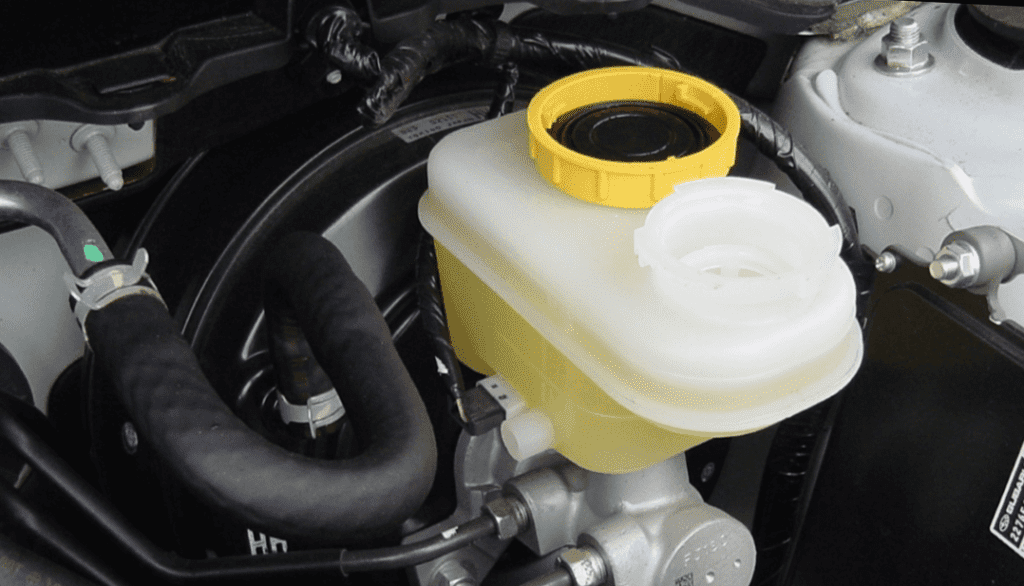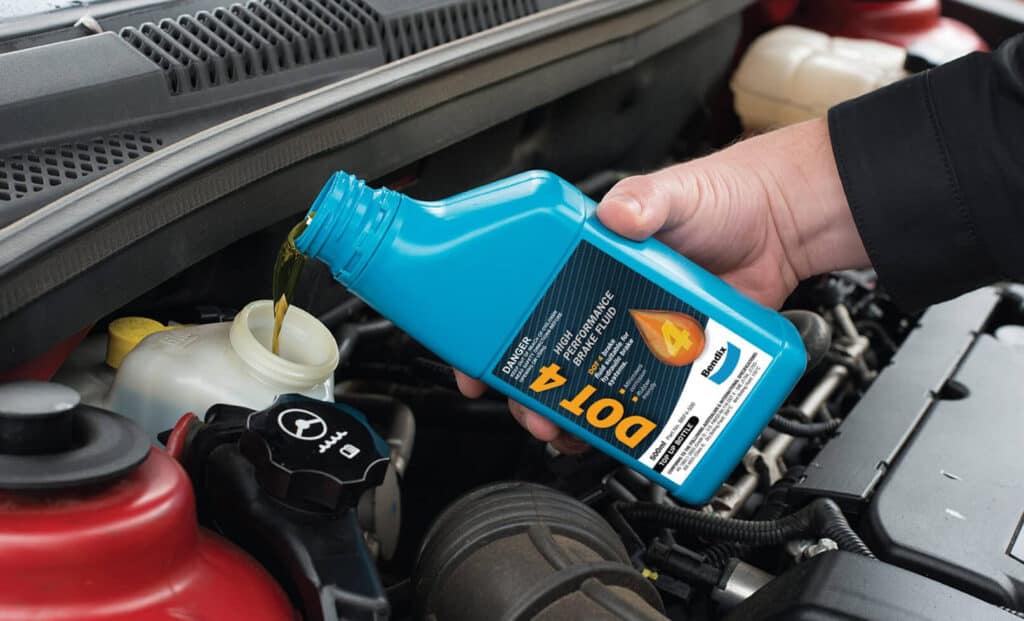Understanding the Connection Between Brake Fluid Temperature and Braking Performance
The braking system is a critical component of your vehicle, responsible for your safety on the road. One often overlooked aspect of the braking system is the brake fluid, which plays a crucial role in its performance. In this article, we will discuss how brake fluid temperature affects your car’s brakes, as well as the importance of proper maintenance and monitoring.
The Role of Brake Fluid in Your Vehicle’s Braking System
Brake fluid is responsible for transferring the force of your foot on the brake pedal to the brake calipers, which in turn squeeze the brake pads against the rotors to stop the vehicle. It is a hydraulic fluid that must maintain consistent performance under various temperatures and pressures, ensuring efficient and reliable braking.

Brake Fluid Temperature: How It Increases During Braking
When you apply your brakes, the friction created between the brake pads and rotors generates heat. This process is essential for slowing down or stopping your vehicle. However, as the braking action continues, especially during intense or prolonged braking situations like descending steep hills or engaging in high-performance driving, the brake fluid’s temperature can significantly increase. A higher brake fluid temperature can impact the overall performance and reliability of your braking system, making it crucial to monitor and manage it for optimal safety and efficiency.
The Impact of High Temperatures on Brake Fluid
• Reduced Boiling Point: High temperatures can significantly impact brake fluid by lowering its boiling point. When the fluid reaches its boiling point, vapor forms within the brake lines, causing a spongy or unresponsive brake pedal and diminished braking performance. This compromised performance can be dangerous, especially in situations where quick and effective braking is necessary.
• Brake Fade and Decreased Braking Performance: Elevated temperatures can also result in brake fade, a temporary decline in braking performance due to the overheating of brake components. Brake fade can be particularly hazardous during high-speed or emergency braking scenarios, as it may hinder your ability to control your vehicle effectively and increase the risk of accidents.
• Fluid Degradation and Contamination: Brake fluid exposed to high temperatures for extended periods can degrade and become contaminated. This degradation can lead to suboptimal braking performance and even damage to the braking system’s components, resulting in costly repairs and potentially compromised safety. Regular maintenance and monitoring of brake fluid can help prevent these issues and keep your vehicle’s braking system in optimal condition.
Brake Fluid Types and Their Temperature Ratings: DOT 3, DOT 4, and DOT 5
Brake fluids come in various types, each with specific temperature ratings and properties. DOT 3, DOT 4, and DOT 5 are the most prevalent types you’ll encounter, with each one designed to cater to different vehicle and driving requirements.
DOT 4 and DOT 5 brake fluids boast higher temperature resistance compared to DOT 3, making them more suitable for high-performance vehicles or demanding driving conditions. These advanced fluids can withstand the heat generated during intense braking without compromising performance.
When choosing the appropriate brake fluid for your vehicle, it’s essential to consider factors such as your driving habits, vehicle type, and typical driving conditions. By selecting the right brake fluid, you can ensure optimal performance and longevity for your vehicle’s braking system.
How to Monitor Brake Fluid Temperature: Tools and Techniques
Monitoring your brake fluid temperature can help you prevent overheating and maintain optimal braking performance. Some methods for monitoring brake fluid temperature include using infrared thermometers, installing temperature sensors, or employing specialized diagnostic tools.
• Preventing Overheating: Effective Heat Dissipation in Your Braking System
• Brake Cooling Systems and Vents: To prevent overheating and maintain optimal brake fluid temperature, it’s essential to have effective brake cooling systems and vents in place. These components work together to dissipate the heat generated during braking, ensuring your brakes continue to function efficiently and safely. Brake cooling systems may include ducts or vents that direct cool air toward the brakes, helping to keep temperatures within the desired range.
• Selecting the Right Brake Components for Your Vehicle: Choosing the appropriate brake components is crucial in preventing overheating and maintaining optimal brake fluid temperature. High-performance brake pads, rotors, and fluid are specifically designed to handle higher temperatures and provide better heat dissipation. When selecting these components, consider your driving habits, vehicle type, and the typical driving conditions you encounter to ensure you choose the right parts to keep your braking system functioning at its best.
• Brake Fluid Maintenance: Ensuring Optimal Temperature and Performance
• Regular Brake Fluid Changes: Performing regular brake fluid changes is crucial for maintaining the fluid’s temperature resistance and overall braking performance.
• Using the Correct Brake Fluid Type: It is essential to use the correct brake fluid type for your vehicle, as specified by the manufacturer, to ensure optimal performance and prevent potential damage to the braking system.
Recognizing the Signs of Overheated Brake Fluid and Taking Action
If you notice a spongy brake pedal, unusual smells, or decreased braking performance, it could be a sign of overheated brake fluid. Take action by pulling over and allowing your brakes to cool down, then seek professional assistance to diagnose and address the issue.

Conclusion: Keep Your Brakes in Top Shape by Understanding the Effects of Brake Fluid Temperature
In conclusion, understanding the effects of brake fluid temperature on your vehicle’s braking performance is vital for maintaining safety and efficiency on the road. By monitoring brake fluid temperatures, choosing the right components, and performing regular maintenance, you can ensure your brakes remain in top shape and avoid potential problems associated with overheating. Remember to stay vigilant for signs of overheated brake fluid and take appropriate action when necessary. By doing so, you’ll ensure a safer and more enjoyable driving experience.
Uchanics is your ultimate car repair and maintenance solution, tailored to provide unparalleled convenience.
Here’s why Uchanics should be your top choice for brake repairs:
• Experience brake pad replacements and brake servicing right at your doorstep
• Effortless online booking for your convenience
• Transparent, competitive pricing
• Skilled mobile technicians at your service
• Utilizing top-notch equipment and superior replacement parts
• Capability to complete 90% of repairs on-site, eliminating the need for a trip to the auto repair shop
• A reassuring 12-month, 20,000 km warranty for peace of mind
• Covering over 40 cities in Ontario including Oshawa, Ajax, Toronto, Vaughan, North York, Brampton, Mississauga and more
To receive a precise estimate for the cost of replacing your brake pads, simply request a Free quote by clicking here.
